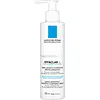What's inside
What's inside
 Key Ingredients
Key Ingredients

 Benefits
Benefits

 Concerns
Concerns

 Ingredients Side-by-side
Ingredients Side-by-side

Water
Skin ConditioningSodium Hydroxypropylsulfonate Laurylglucoside Crosspolymer
CleansingPolyglyceryl-4 Caprate
EmulsifyingSodium C14-16 Olefin Sulfonate
CleansingSodium Coco-Glucoside Tartrate
CleansingSodium Cocoyl Hydrolyzed Amaranth Protein
Skin ConditioningSodium Methyl Cocoyl Taurate
CleansingCocamidopropyl Betaine
CleansingSodium Cocoamphoacetate
CleansingButylene Glycol
HumectantPropanediol
SolventGluconolactone
Skin ConditioningGlycerin
HumectantSodium Hydroxypropylsulfonate Decylglucoside Crosspolymer
CleansingSodium Benzoate
MaskingCocamidopropyl Hydroxysultaine
CleansingCamellia Sinensis Leaf Extract
AntimicrobialPhenethyl Alcohol
MaskingCaprylyl Glycol
EmollientAlcohol Denat.
AntimicrobialVitis Vinifera Seed Extract
AntimicrobialPunica Granatum Extract
AstringentCitrus Grandis Peel Oil
MaskingPrunus Serotina Bark Extract
MaskingCitrus Limon Peel Oil
MaskingSodium Hydroxide
BufferingYucca Schidigera Root Extract
Skin ConditioningLitchi Chinensis Pericarp Extract
Skin ConditioningCitrus Aurantium Dulcis Flower Oil
AstringentPrunus Avium Fruit Extract
Skin ConditioningPrunus Cerasus Fruit Extract
AntioxidantHamamelis Virginiana Water
AstringentAlcohol
AntimicrobialEpigallocatechin Gallate
AntioxidantCitric Acid
BufferingWater, Sodium Hydroxypropylsulfonate Laurylglucoside Crosspolymer, Polyglyceryl-4 Caprate, Sodium C14-16 Olefin Sulfonate, Sodium Coco-Glucoside Tartrate, Sodium Cocoyl Hydrolyzed Amaranth Protein, Sodium Methyl Cocoyl Taurate, Cocamidopropyl Betaine, Sodium Cocoamphoacetate, Butylene Glycol, Propanediol, Gluconolactone, Glycerin, Sodium Hydroxypropylsulfonate Decylglucoside Crosspolymer, Sodium Benzoate, Cocamidopropyl Hydroxysultaine, Camellia Sinensis Leaf Extract, Phenethyl Alcohol, Caprylyl Glycol, Alcohol Denat., Vitis Vinifera Seed Extract, Punica Granatum Extract, Citrus Grandis Peel Oil, Prunus Serotina Bark Extract, Citrus Limon Peel Oil, Sodium Hydroxide, Yucca Schidigera Root Extract, Litchi Chinensis Pericarp Extract, Citrus Aurantium Dulcis Flower Oil, Prunus Avium Fruit Extract, Prunus Cerasus Fruit Extract, Hamamelis Virginiana Water, Alcohol, Epigallocatechin Gallate, Citric Acid
 Reviews
Reviews

Ingredients Explained
These ingredients are found in both products.
Ingredients higher up in an ingredient list are typically present in a larger amount.
Caprylyl Glycol is a humectant and emollient, meaning it attracts and preserves moisture.
It is a common ingredient in many products, especially those designed to hydrate skin. The primary benefits are retaining moisture, skin softening, and promoting a healthy skin barrier.
Though Caprylyl Glycol is an alcohol derived from fatty acids, it is not the kind that can dry out skin.
This ingredient is also used as a preservative to extend the life of products. It has slight antimicrobial properties.
Learn more about Caprylyl GlycolGlycerin is already naturally found in your skin. It helps moisturize and protect your skin.
A study from 2016 found glycerin to be more effective as a humectant than AHAs and hyaluronic acid.
As a humectant, it helps the skin stay hydrated by pulling moisture to your skin. The low molecular weight of glycerin allows it to pull moisture into the deeper layers of your skin.
Hydrated skin improves your skin barrier; Your skin barrier helps protect against irritants and bacteria.
Glycerin has also been found to have antimicrobial and antiviral properties. Due to these properties, glycerin is often used in wound and burn treatments.
In cosmetics, glycerin is usually derived from plants such as soybean or palm. However, it can also be sourced from animals, such as tallow or animal fat.
This ingredient is organic, colorless, odorless, and non-toxic.
Glycerin is the name for this ingredient in American English. British English uses Glycerol/Glycerine.
Learn more about GlycerinPropanediol is an all-star ingredient. It softens, hydrates, and smooths the skin.
It’s often used to:
Propanediol is not likely to cause sensitivity and considered safe to use. It is derived from corn or petroleum with a clear color and no scent.
Learn more about PropanediolSodium Hydroxide is also known as lye or caustic soda. It is used to adjust the pH of products; many ingredients require a specific pH to be effective.
In small amounts, sodium hydroxide is considered safe to use. However, large amounts may cause chemical burns due to its high alkaline.
Your skin has a natural pH and acid mantle. This acid mantle helps prevent harmful bacteria from breaking through. The acid mantle also helps keep your skin hydrated.
"Alkaline" refers to a high pH level. A low pH level would be considered acidic.
Learn more about Sodium HydroxideWater. It's the most common cosmetic ingredient of all. You'll usually see it at the top of ingredient lists, meaning that it makes up the largest part of the product.
So why is it so popular? Water most often acts as a solvent - this means that it helps dissolve other ingredients into the formulation.
You'll also recognize water as that liquid we all need to stay alive. If you see this, drink a glass of water. Stay hydrated!
Learn more about Water